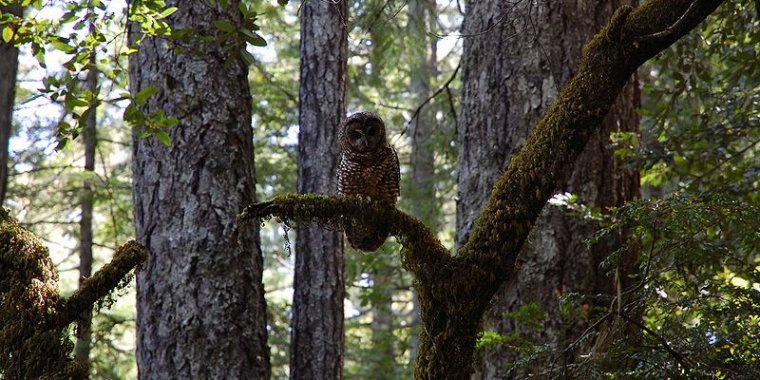| News / Science News |
Researchers find preserving spotted owl habitat may not require a tradeoff with wildfire risk after all
In a study, scientists from the University of California, Davis; USDA Forest Service Pacific Southwest Research Station; and University of Washington have found a way to resolve the conflict that has sprung up between protecting forests from increasingly frequent wildfires and droughts and preserving sufficient habitat for the endangered spotted owl, Strix occidentalis. The study was performed in two national parks in California, United States.
For the past twenty-five years, spotted owl habitat preservation has focused on keeping 70% or more of the total ground area covered by natural tree canopy, a tree density that leaves forests prone to wildfires and trees more likely to die during droughts. Both wildfires and droughts have become more frequent in the years since the program began.
However, the previous studies upon which the 70% figure was based only measured overall canopy coverage. In this work, researchers used aerial LiDAR (Light Detection And Ranging) imaging technology to scan areas within Kings Canyon National Park and Sequoia National Park in California.
The regions were analyzed by distribution of foliage, tree height, and the sizes of the spaces between trees and stands. These data were then cross-referenced with decades of field studies showing the locations of hundreds of owl nests.
They found that spotted owls clustered in areas with very tall trees and stands almost exclusively, over 150 feet (48 m), avoiding areas that only had moderate or low canopy, regardless of how dense or wide.
The spotted owl gained national prominence in the United States during the 1990s, when environmentalists' efforts to preserve its habitat resulted in federal measures forbidding logging on large swaths of land, as well as federal limits on the sales of harvested wood.
There was a 1995 US Supreme Court case which was preceded by lawsuits on the part of timber companies, and by years of large protests by timber workers and their communities who feared job losses. For a time, it seemed that the spotted owl was also threatened by competition from the faster-breeding barred owl, which had moved west into its territory. (Wikinews)
YOU MAY ALSO LIKE



